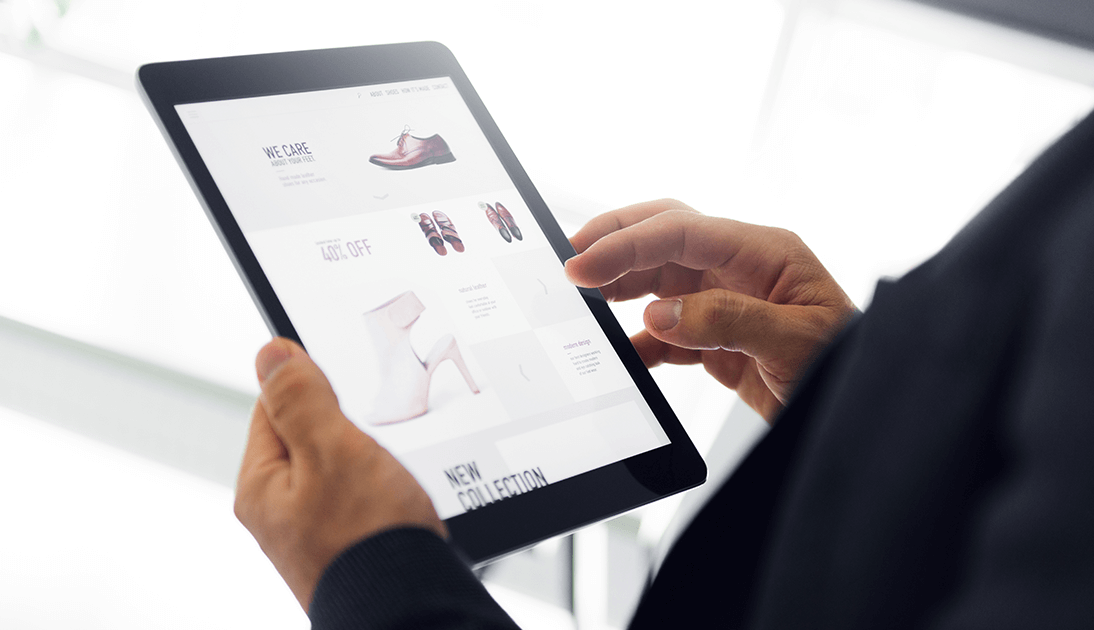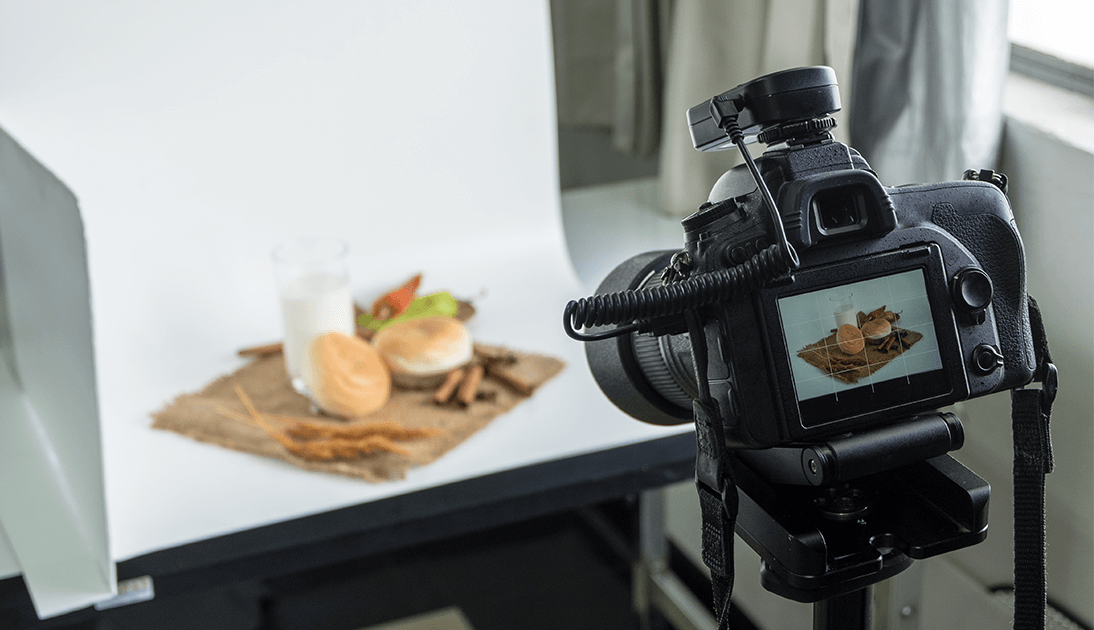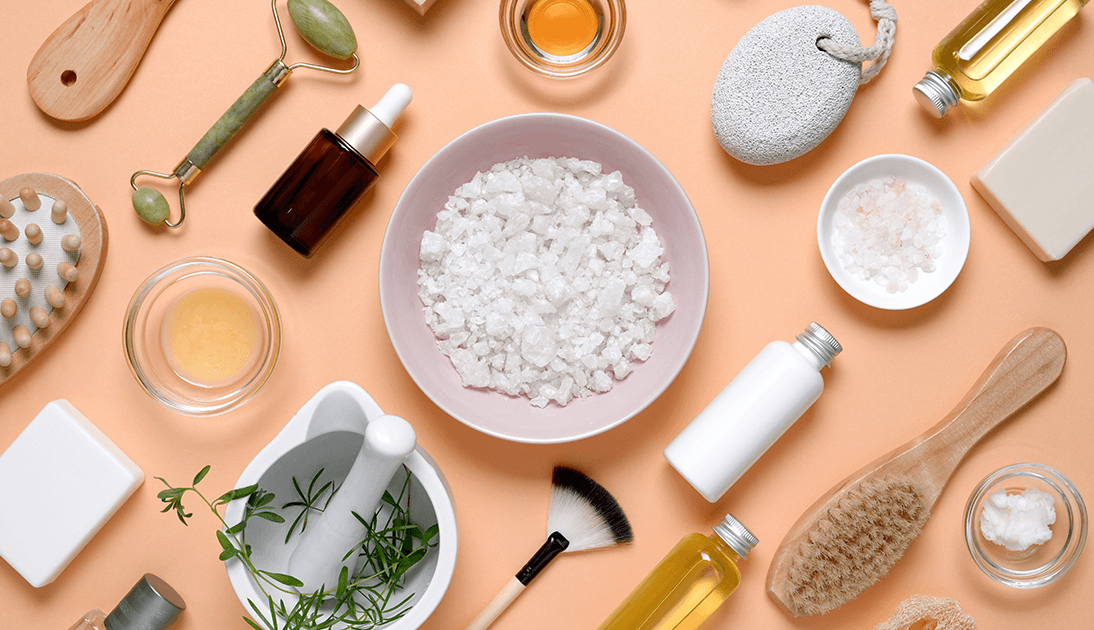
Your future customers are waiting to browse your goods, and when they do they will almost certainly buy with their eyes before their wallets. That means it’s crucial for your product pics to look enticing as heck.
Recent Etsy shoppers reported that quality images were the No. 1 influencer in their decision to purchase, more so than the item’s cost or positive reviews. What makes a quality image? Good lighting, demonstrating scale, relevant backdrops, clear focus, and skilled editing. Here are our best tips for shooting and editing product photos that will move your wares from shelf to shopping cart.
Lighting is key for professional-looking product photos

Begin your shoot by setting up somewhere with great lighting. Take advantage of natural light — think sunlight streaming in through a window — or opt for an artificial source like a 100w LED bulb. Photographer Beryl Ayn Young says that if you shoot outside, look for areas of open shade, which are “places where your product is in the shade, but there is ample light in the surrounding areas,” she says. “Covered porches are a great example of open shade” and they are excellent for an al fresco photo session.
If you’re shooting indoors, forgo the flash and instead go with an artificial light source. There are copious online tutorials for how to DIY a lightbox, i.e., a white, open cube lighted from the top in which to photograph products. Building a lightbox is cheap, and you’ll get expensive-looking results. Pics taken in a lightbox have that “floating in white space” look that’s great for making your product the star of the image, but you can also style the interior of your box, or easily remove and replace the background in the editing stage.
Shooting product pics with phone or camera?

Shooting your products on a phone is a totally reasonable choice given that modern phone cameras can seriously approximate shoots done with professional gear. Experiment with portrait mode or macro mode, and be sure to read Top 10 Tips for Taking Better Pictures with Your iPhone for more knowledge. Upload your phone pics to PicMonkey’s Hub on your phone’s web browser or via the PicMonkey app, and you’re all set to begin editing!
Are you more of a professional photog? Young suggests keeping the F-stop in the lower range (1.8-3.2 for a 50mm or 35mm lens), because “the lower you set your F-stop, the more blur you will create in the background,” she explains. “In this way, you can truly focus a viewer’s eye on your product.”
Try flat lay photography for product images

Flat lay photography gives a bird’s eye view of your products and is especially useful if you’re selling products that wouldn’t stand up alone for photographing (e.g., notebooks, cutting boards, belts, or jewelry). Flat lay is also an excellent way to show scale because you can arrange a number of objects together to give an idea of the relative size of your product.
Dive in deeper to flat lay with our article: 10 Tips for Acing Flat Lay Photography.
Editing product pics to perfection

Next, let’s talk about editing the photos after you’ve finished shooting. First things first, get your photos into PicMonkey and then you can begin to tweak, touch up, and tailor. Get the importing/uploading details: Getting Images into Your Hub.
You can approximate picture-perfect photos with many powerful editing features in PicMonkey: Resize or crop your photo to best show off the product, clean up the background using erase or the clone tool, and try touch up to brighten and smooth. You can apply effects to your photos, and even add your logo as a watermark.
Best practices for Etsy product pics
If you’re an Etsy seller specifically, you can check out their guide to product photography to learn all you ever wanted to know about uploading product pics to their website. In a nutshell:
Dimensions: at least 2000 px wide and the height is flexible
Supported file types: JPG, PNG, GIF, and video formats
File size: less than 1 MB, and < 300 KB will upload quickest
Convert your images to the sRGB color profile to ensure the colors remain true once uploaded (all images export from PicMonkey as sRGB)
Use at least 5 different images so shoppers can get a feel for the product
You can use one video per listing: 5–15 seconds without audio. Ideal resolution is at least 1080px.
Don’t miss our article: Get the Scoop on How to Sell on Etsy
Share product photos directly to Etsy from PicMonkey

When you connect your Etsy account to PicMonkey (via the Share drop-down menu) you can send your editing product listing photos directly to your shop. PicMonkey will supply you with the Etsy link to your draft image that you just shared so that you can go directly to it to finish adding all the details. Learn more: Sharing Product Photos Directly to Etsy
Best practices for Shopify product pics
To sell your wares on a Shopify store, view their Product Images help section. Here are the basics:
Dimensions: maximum of 4472 x 4472 px or 20 megapixels
Supported file types: recommends only JPG
File size: less than 20 MB
Shopify doesn’t standardize the size of your photos, so be sure to upload all your pics at the same size or the same aspect ratio
You can add up to 250 images per product
Shopify recommends adding a watermark to your pics
Best practices for GoDaddy Online Store product pics
If you use GoDaddy’s Online Store to sell your goods, make sure you read our in-depth article all about doing biz via this platform: How to Create and Customize a GoDaddy Online Store. Here are the image details, and in greater detail here on GoDaddy Help:
Dimensions: maximum image size is 5000 x 5000 px (but they will not be displayed larger than 1920 x 1080 px)
Supported file types: JPG, GIF, PNG
File size: less than 10 MB
You can add up to 10 images per product
Best practices for Amazon product pics
To sell on Amazon, visit Amazon Seller Central to learn all the details about uploading product photos. Amazon’s photo requirements are very stringent and often specific to the type of product being sold. Here is a quick guide to product pics, summarized here:
Dimensions: minimum upload size of at least 1000 px in either height or width
Supported file types: TIFF, JPG, GIF, PNG
Main product image:
Image must be in color, well lit, and be the focus filling 85% or more of the frame
Backgrounds must be pure white
Watermarks, text, and graphics are NOT allowed on main images
Image file name must consist of the product ID code
Additional images:
Backgrounds other than white are allowed
Text or graphics are allowed
